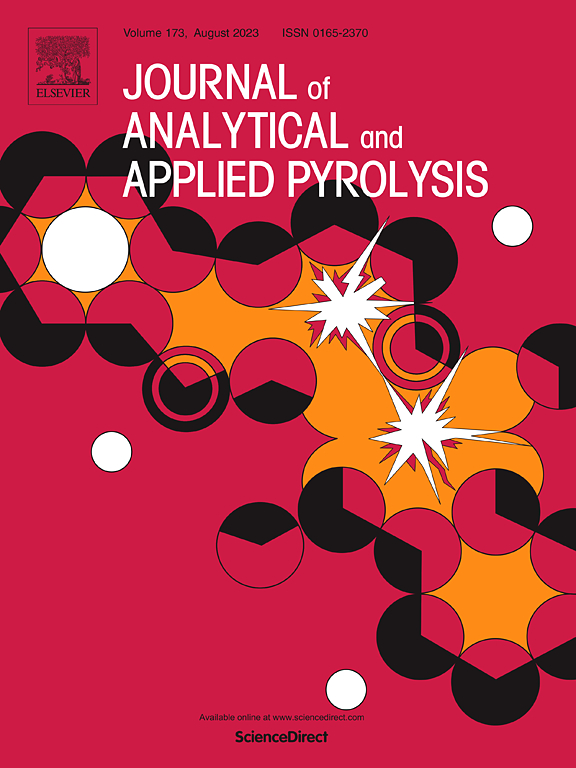海相富有机质泥灰岩生-排-留烃机制:半封闭水热解模拟实验的启示
IF 6.2
2区 化学
Q1 CHEMISTRY, ANALYTICAL
引用次数: 0
摘要
海相富有机质泥灰岩具有烃源岩和原位储层的双重特征,是常规烃源岩和非常规油气勘探的重要领域。然而,对油气演化过程中的排放机理和定量地球化学响应认识尚不清楚,制约了常规-非常规油气资源评价和整个油气系统的勘探开发。本研究采用半封闭水热解模拟系统,对低成熟海相富有机质泥灰岩进行了温度-压力-液体联合控烃生排留实验。对排留烃的化学组成和同位素组成进行了定量分析,揭示了生-排留烃的形成机制和动态演化模式,特别是不同演化阶段排留烃比例的系统变化。结果表明:在整个生油窗口期,储集烃产率大于排出烃产率,生油高峰期储集油率高达82.64 % (VRo=1.03 %);以往的常规研究在一定程度上高估了富有机质烃源岩系统的排烃率,低估了其保留烃的能力。成熟阶段残余干酪根和氯仿沥青“A”提取物的碳同位素值,分馏小于1 ‰,该参数可用于油源比较和烃源示踪。海相富有机质泥灰岩呈生—排—留烃四阶段动态演化模式,页岩油有利勘探成熟度区间为0.76 % ~ 1.6 %。研究成果对拓宽非常规油气勘探领域具有重要意义。本文章由计算机程序翻译,如有差异,请以英文原文为准。
Hydrocarbon generation-expulsion-retention mechanisms in marine organic-rich marl: Insights from semi-closed hydrous pyrolysis simulation experiments
Marine organic matter-rich marl with dual characteristics of hydrocarbon source rock and in-situ reservoir, being a source of conventional hydrocarbons and an important area for unconventional hydrocarbon exploration. However, the understanding of the discharge mechanisms and quantitative and geochemical responses during the hydrocarbon evolution is still unclear, which restricts the conventional-unconventional oil and gas resource evaluation as well as exploration and development of the whole oil and gas system. In this study, a temperature-pressure-liquid combined controlled hydrocarbon generation-expulsion-retention experiment was carried out on low-mature marine organic-rich marl using the semi-closed hydrous pyrolysis simulation system. Chemical and isotopic compositions of the expelled and retained hydrocarbons were quantified and analyzed, revealing the mechanisms of hydrocarbon generation-expulsion-retention and a dynamic evolution model, especially the systematic changes of hydrocarbon discharge and retention ratios in different evolutionary stages. The results showed that the retained hydrocarbon yield was greater than that of the expelled hydrocarbon during the entire oil generation window, and the percentage of retained oil was as high as 82.64 % at the peak of oil generation (VRo=1.03 %). Previous conventional studies have somewhat overestimated the hydrocarbon expulsion ratio of organic-rich source rock systems and underestimated their ability to retain hydrocarbons. Carbon isotope values of residual kerogen and chloroform bitumen “A” extracts at the maturity stage, with fractionation less than 1 ‰, and this parameter could be used for oil source comparison and hydrocarbon source tracing. Marine organic matter-rich marl showed a four-stage dynamic evolutionary pattern of generation-expulsion-retention hydrocarbons, and the favorable shale oil exploration maturity interval was between 0.76 % and 1.6 %. The research results are of great significance to broaden the field of unconventional oil and gas exploration.
求助全文
通过发布文献求助,成功后即可免费获取论文全文。
去求助
来源期刊
CiteScore
9.10
自引率
11.70%
发文量
340
审稿时长
44 days
期刊介绍:
The Journal of Analytical and Applied Pyrolysis (JAAP) is devoted to the publication of papers dealing with innovative applications of pyrolysis processes, the characterization of products related to pyrolysis reactions, and investigations of reaction mechanism. To be considered by JAAP, a manuscript should present significant progress in these topics. The novelty must be satisfactorily argued in the cover letter. A manuscript with a cover letter to the editor not addressing the novelty is likely to be rejected without review.

 求助内容:
求助内容: 应助结果提醒方式:
应助结果提醒方式:


